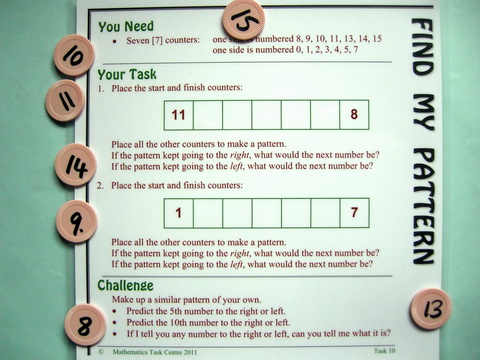
Find My PatternTask 10 ... Years 2 - 8SummaryThe first thing to realise about this task is that it was invented by a group of Year 4 students - so it is probably sneakier than anything a teacher could come up with! It seems simple enough. We are given:
|
Materials
Content
|

IcebergA task is the tip of a learning iceberg. There is always more to a task than is recorded on the card. |
Note: There is a strong link between Find My Pattern and Task 52, Which Floor. |
Whole Class InvestigationTasks are an invitation for two students to work like a mathematician. Tasks can also be modified to become whole class investigations which model how a mathematician works. |
The whole class lesson for this task is detailed in Maths300 Lesson 114, Find My Pattern. To convert the task to a whole class lesson students can quickly fold and tear or cut paper tiles like the counters. These then have to be arranged in sequence to form the pattern. For more ideas and discussion about this investigation, open a new browser tab (or page) and visit Maths300 Lesson 114, Find My Pattern. |
Is it in Maths With Attitude?Maths With Attitude is a set of hands-on learning kits available from Years 3-10 which structure the use of tasks and whole class investigations into a week by week planner. |
The Find My Pattern task is an integral part of:
The Find My Pattern lesson is an integral part of:
|